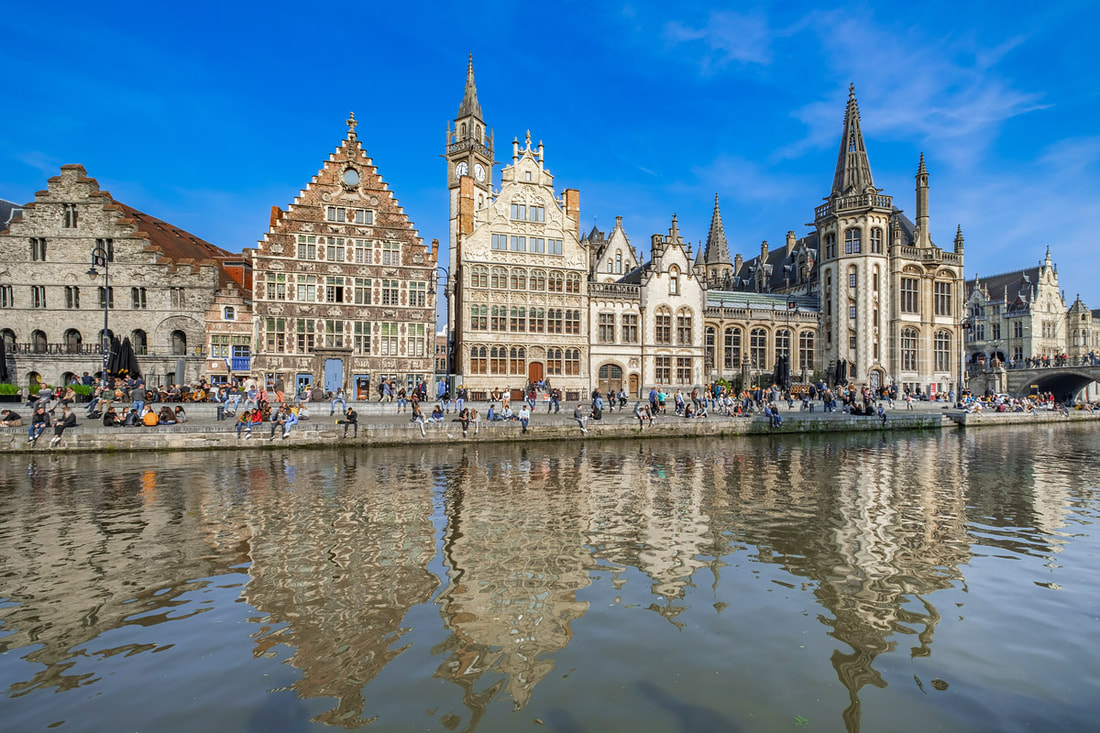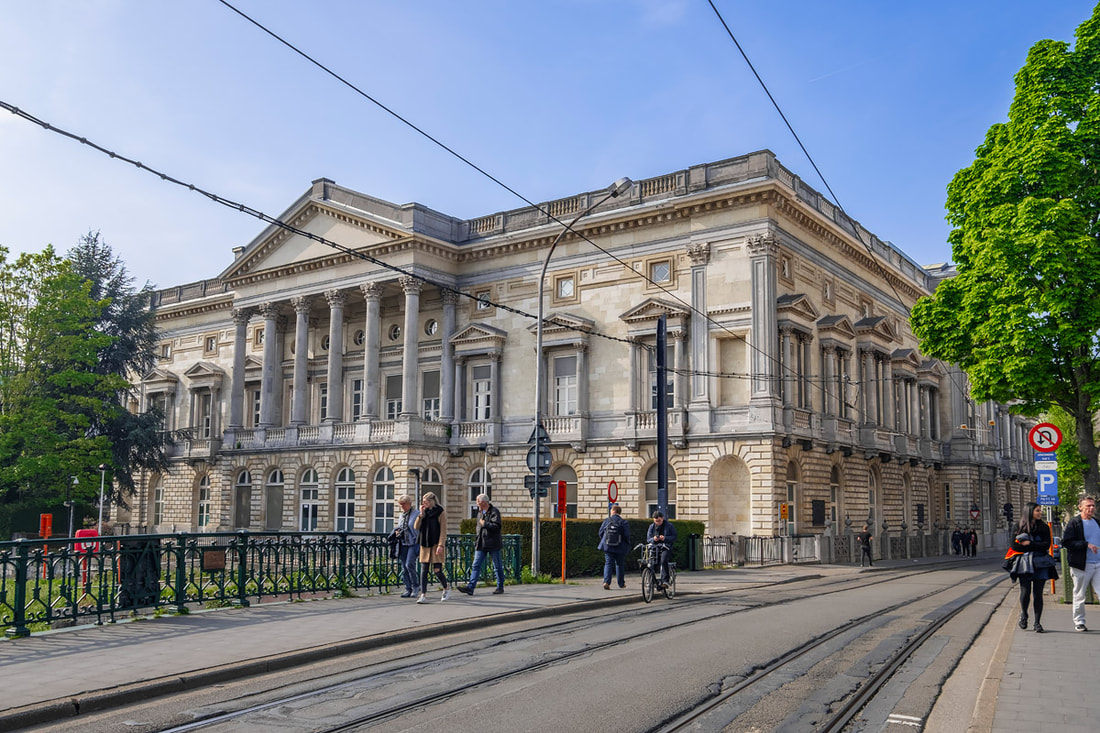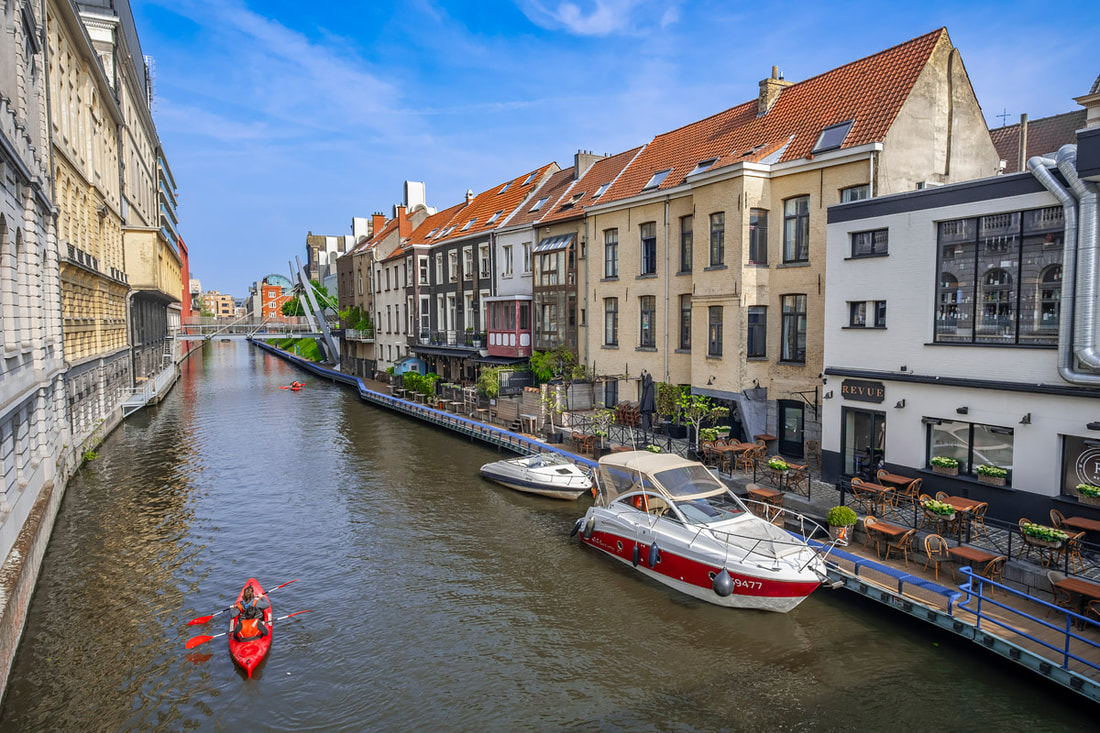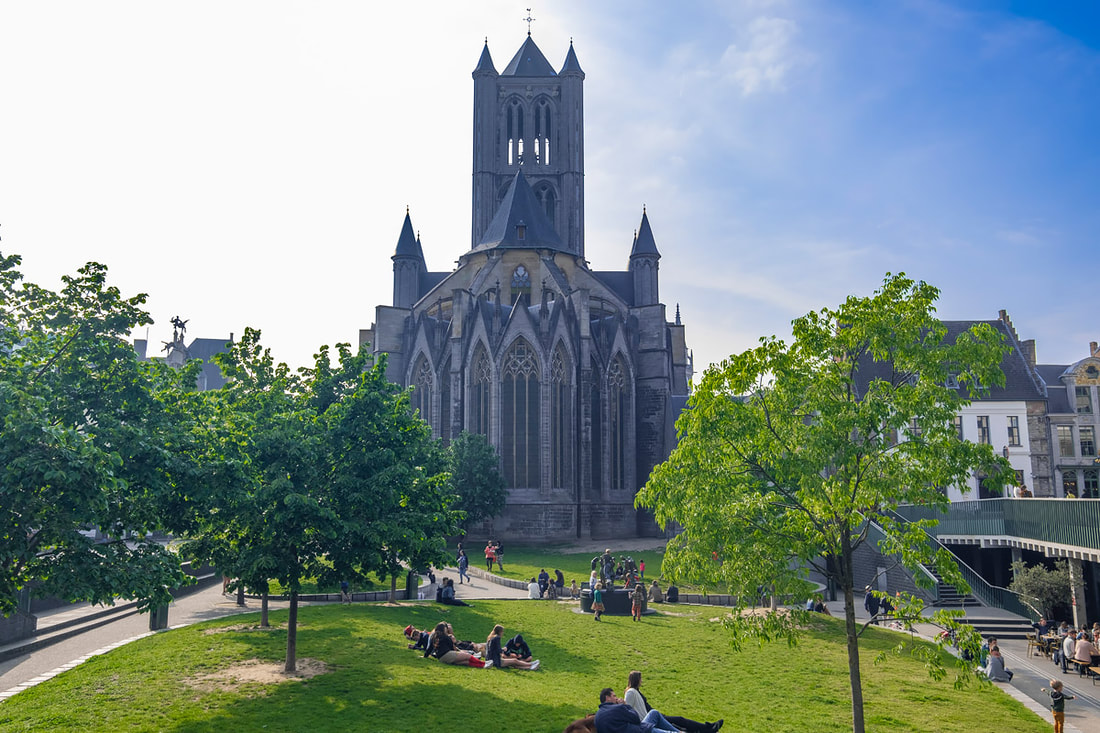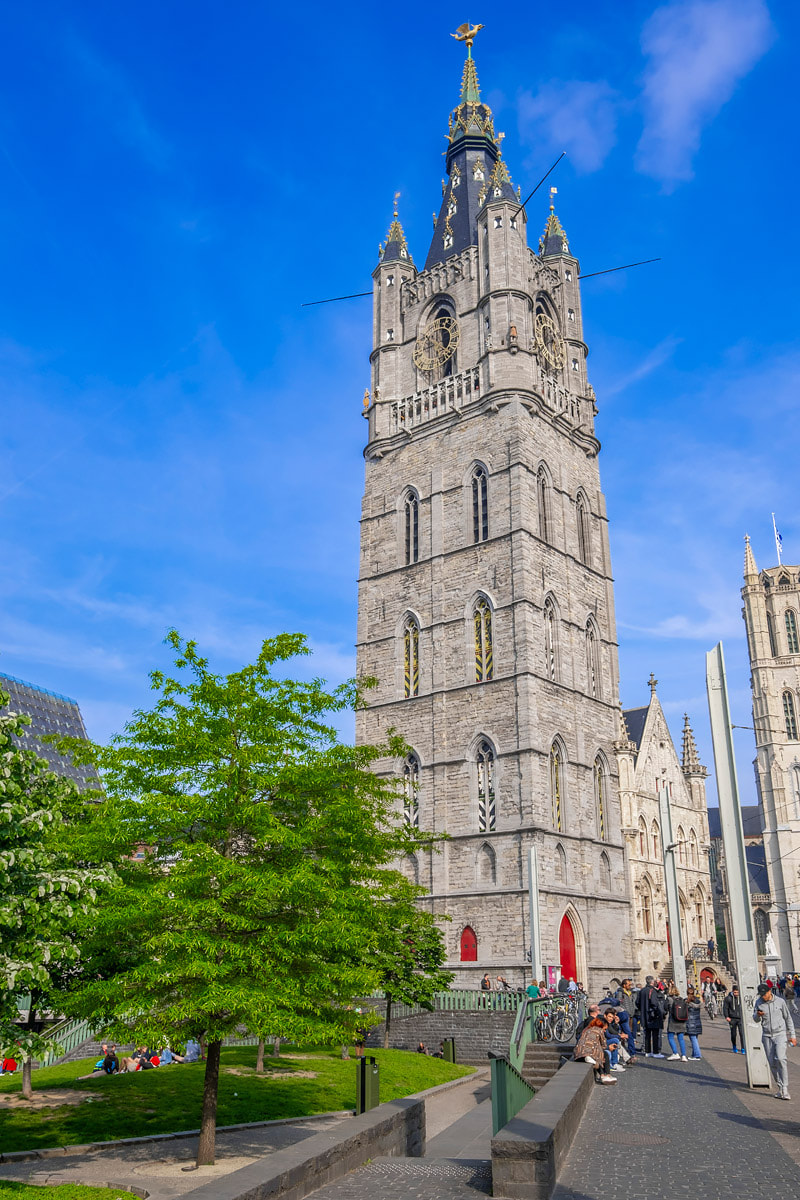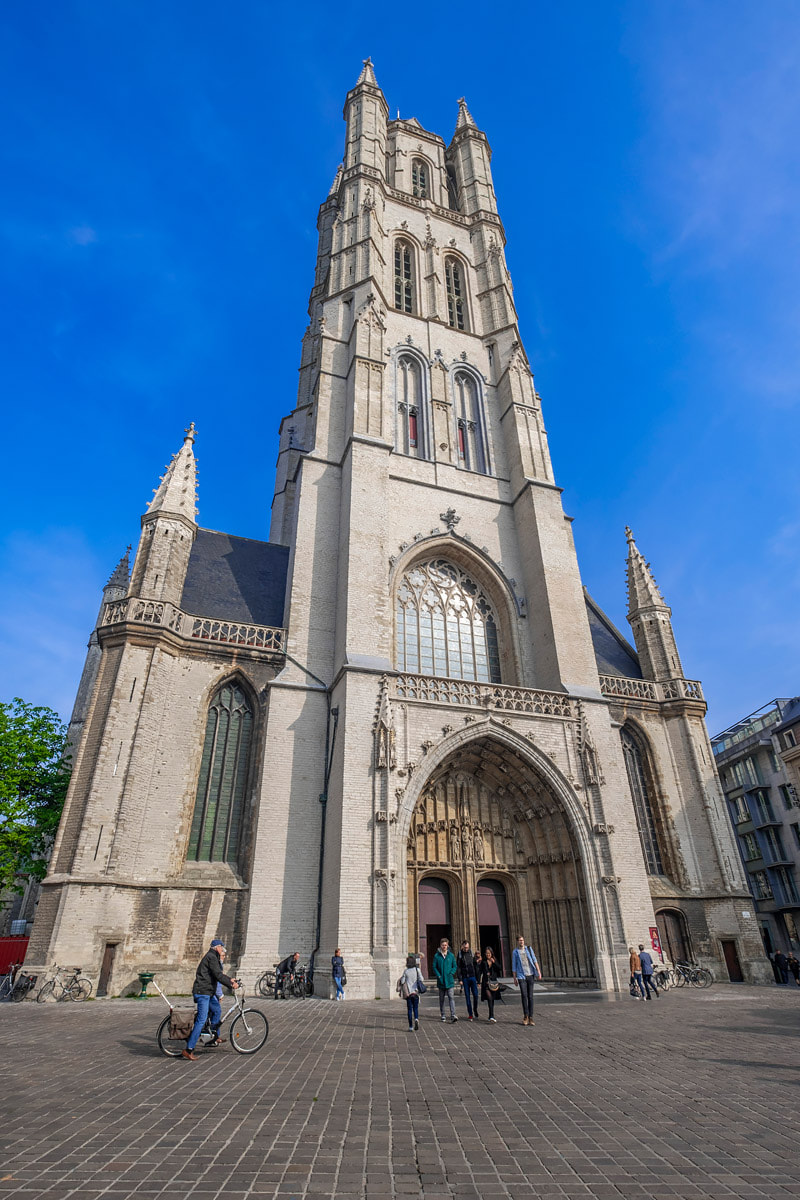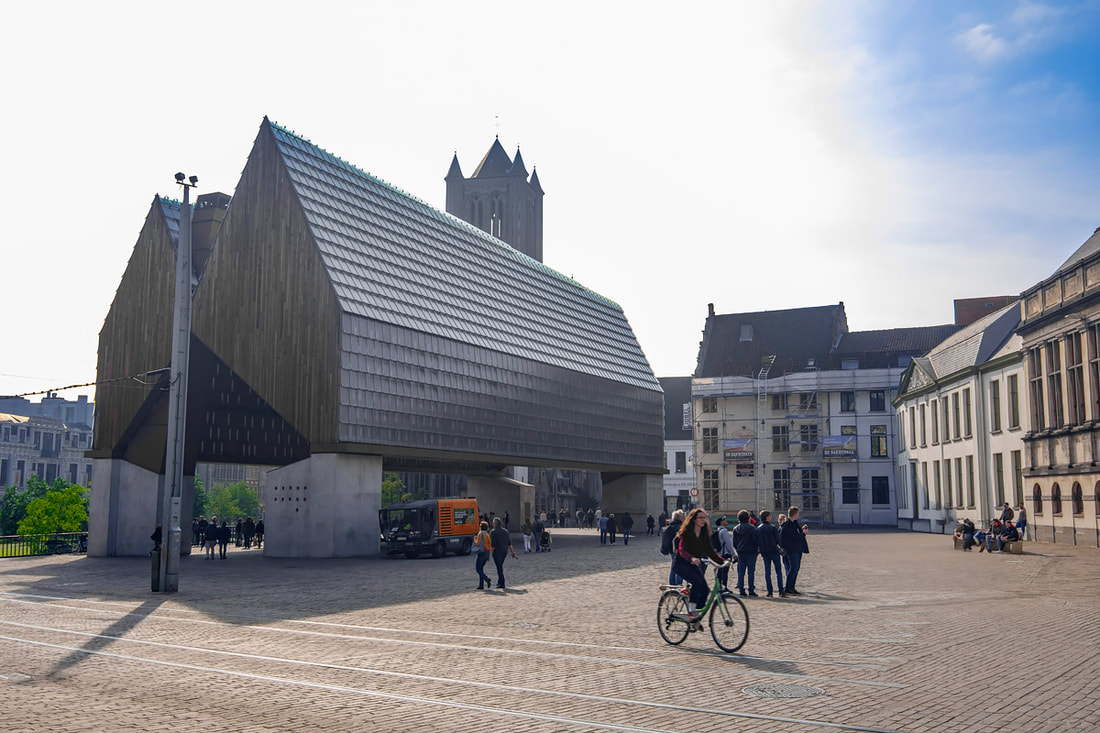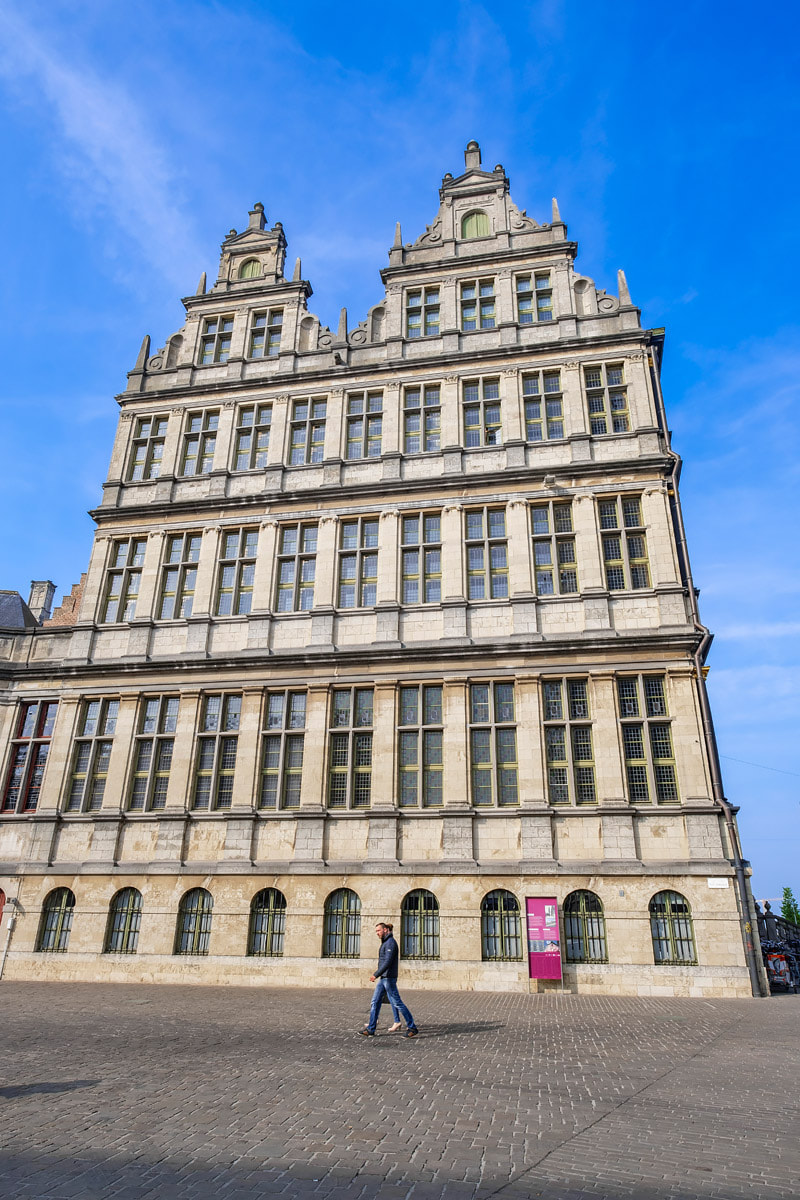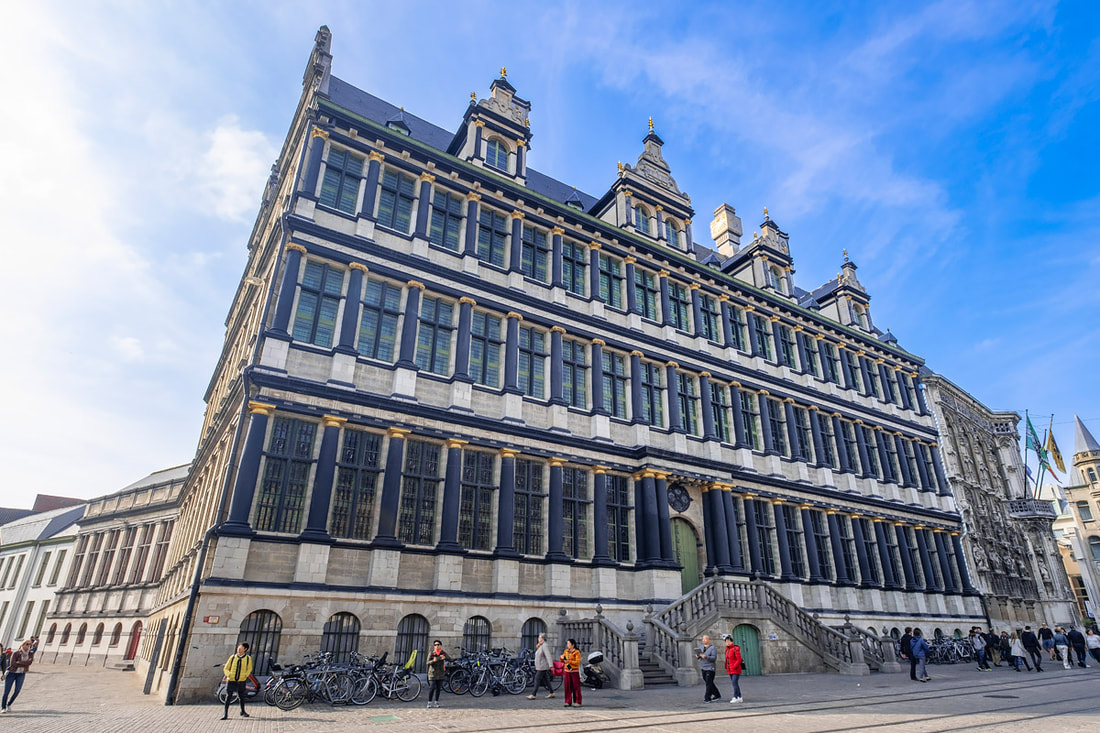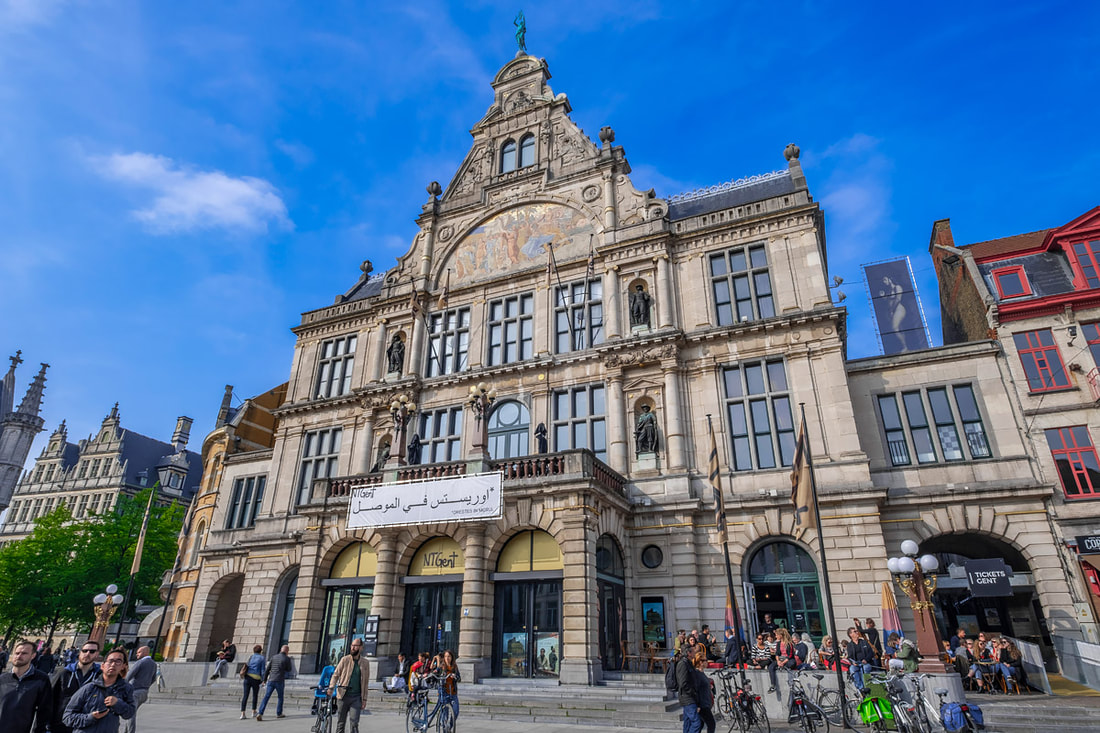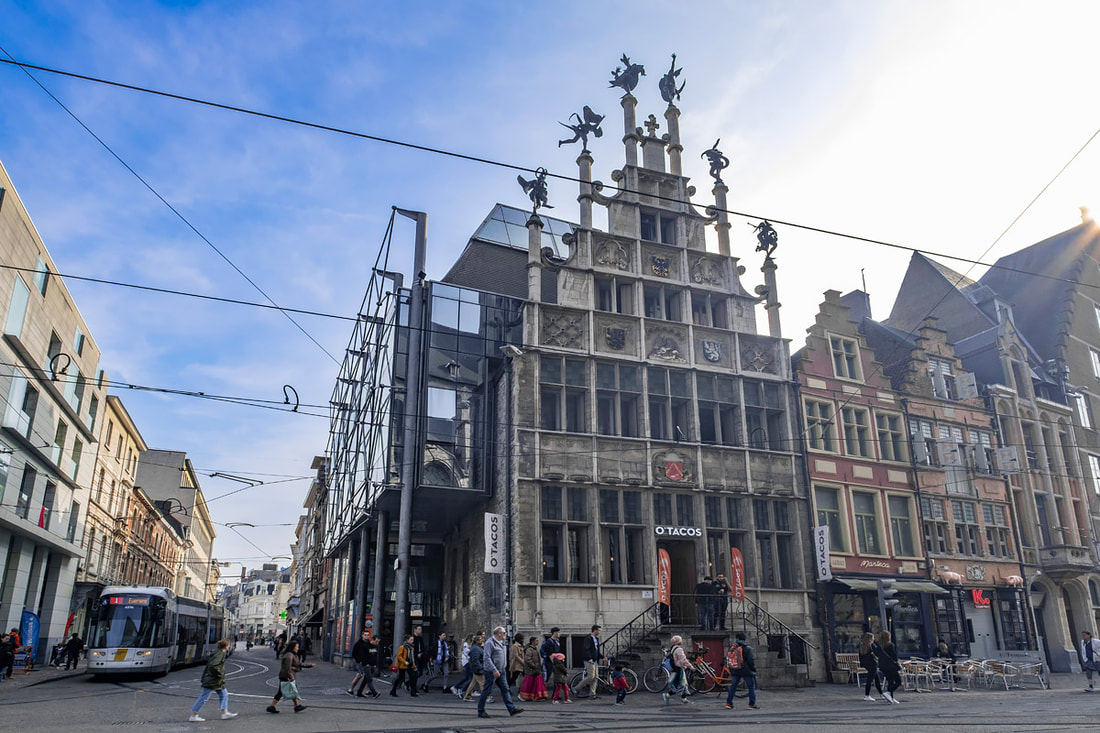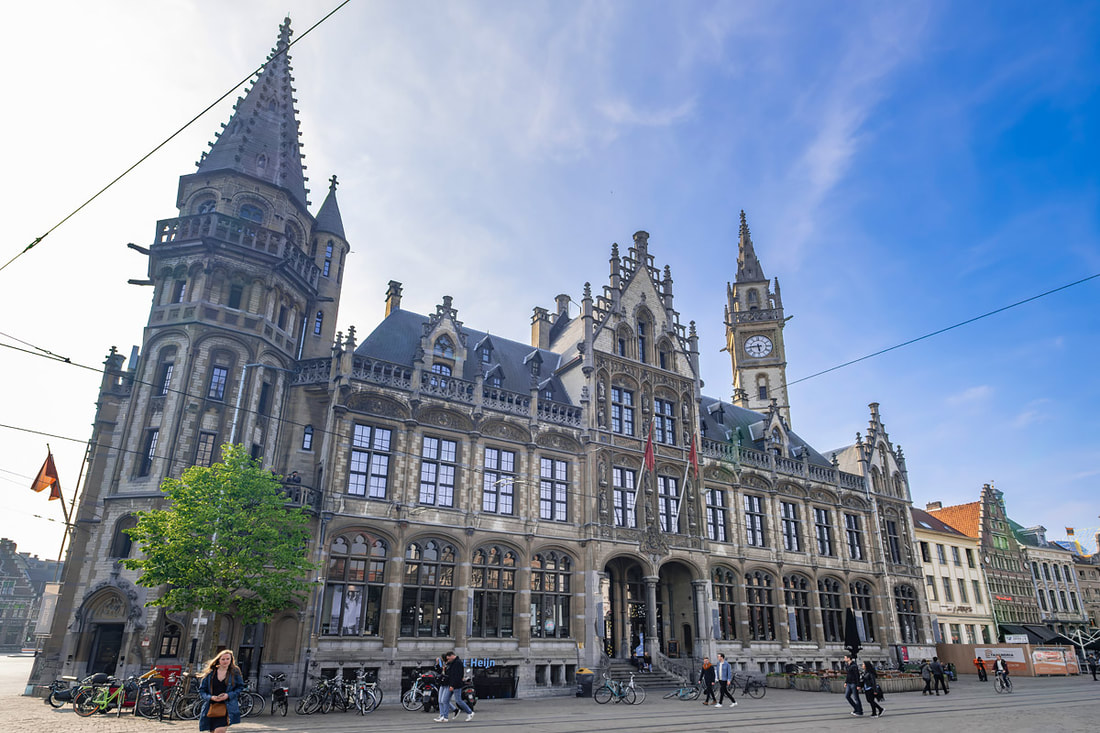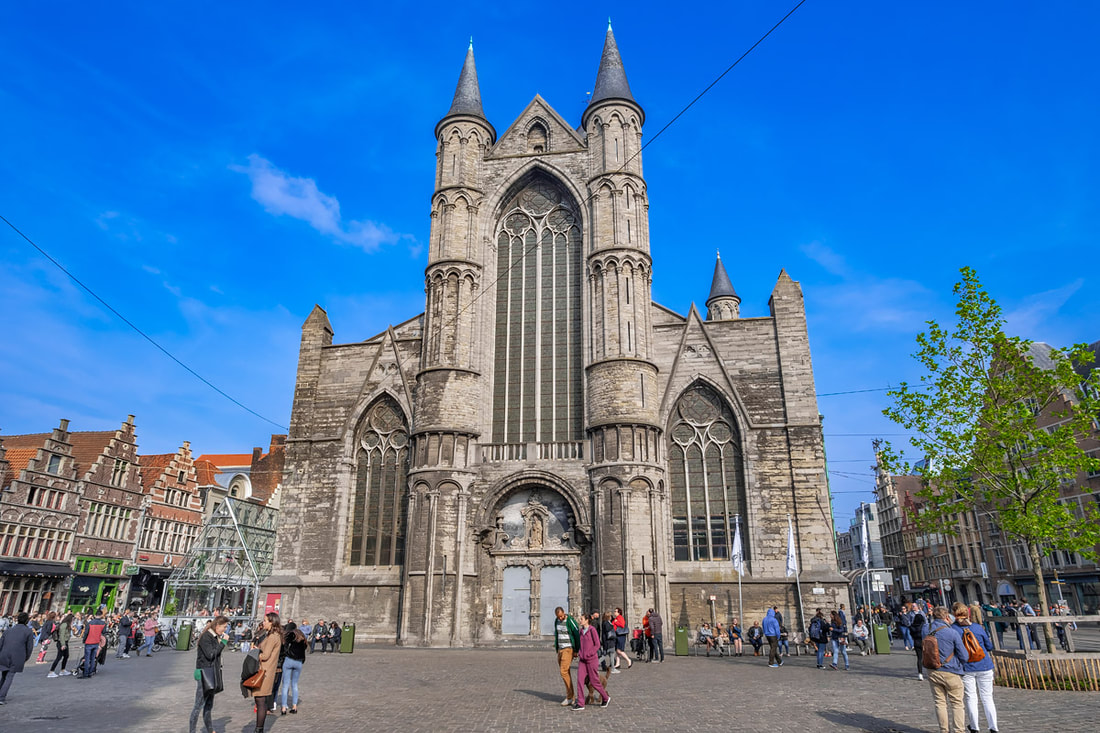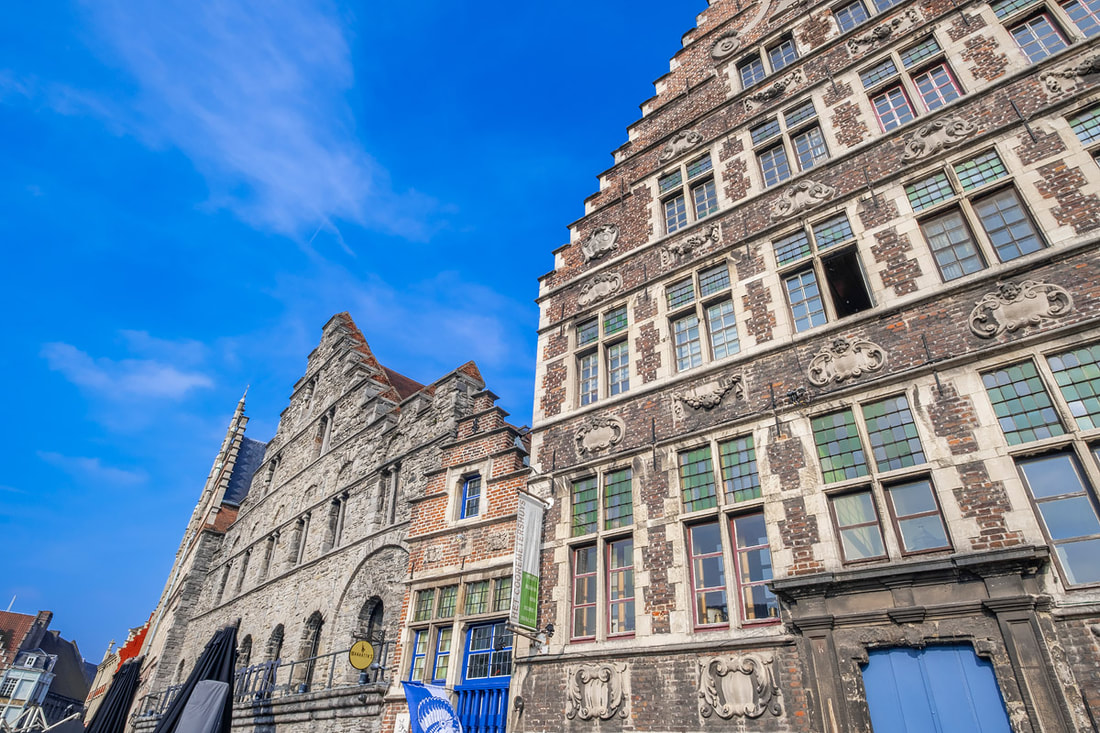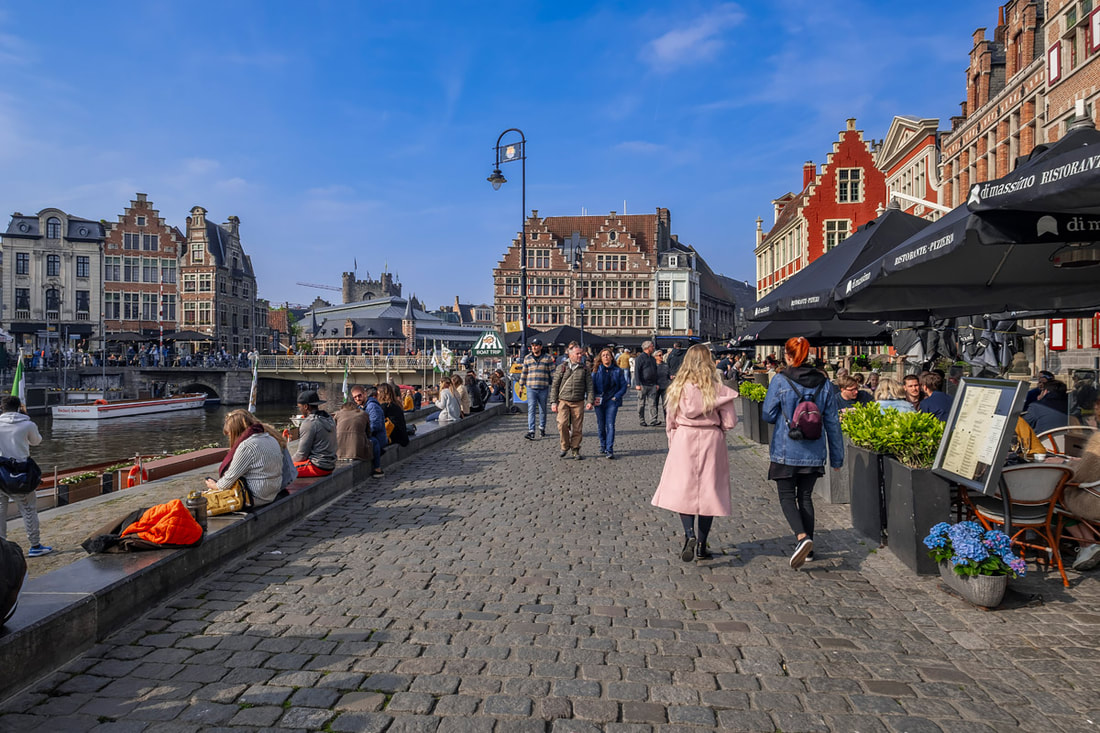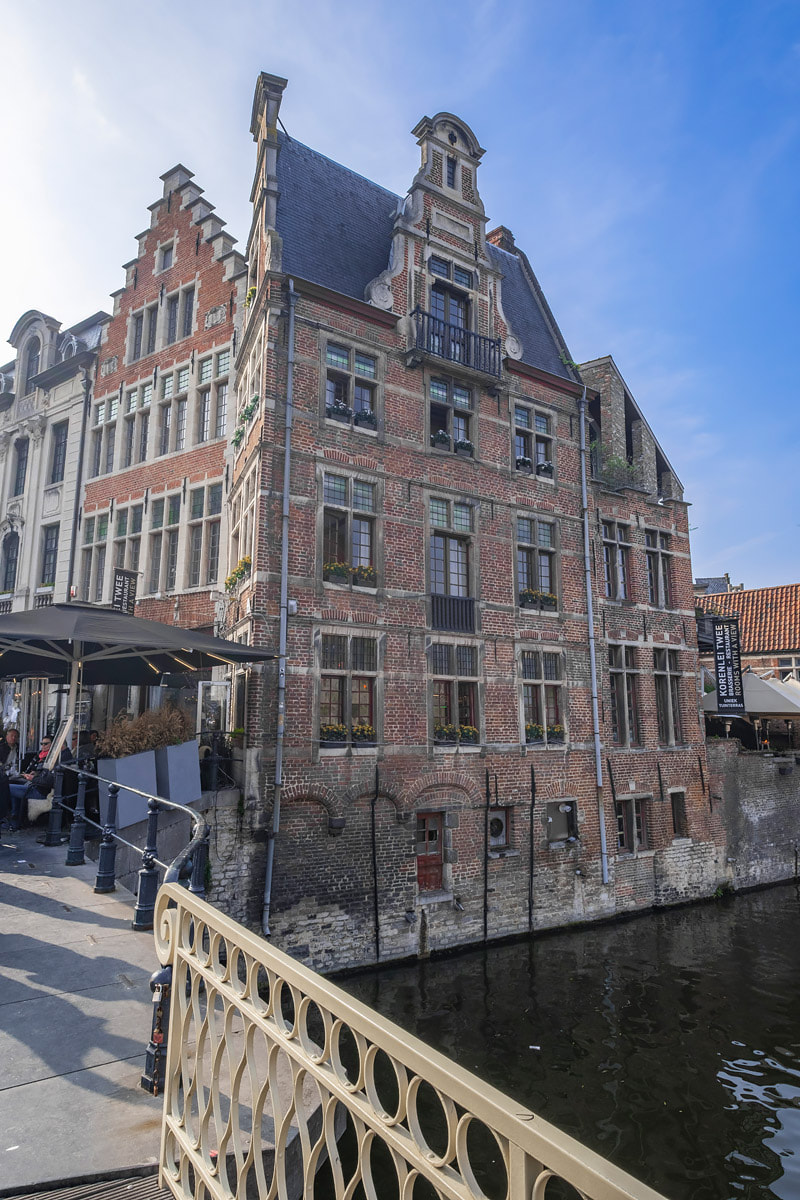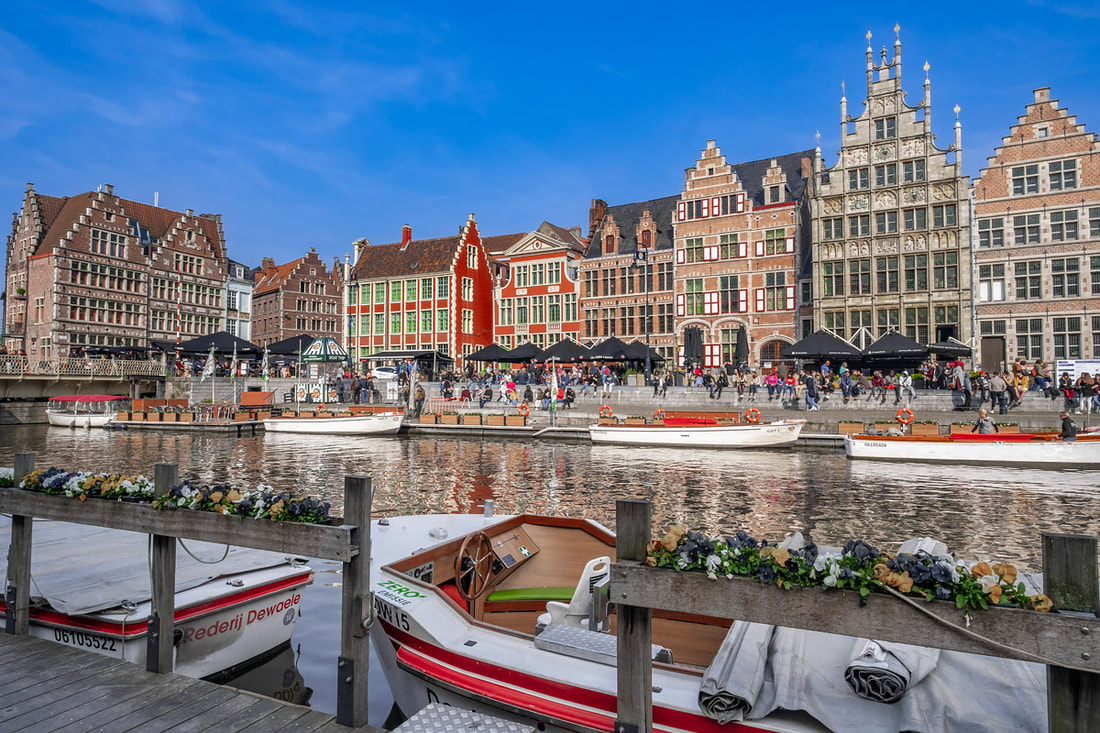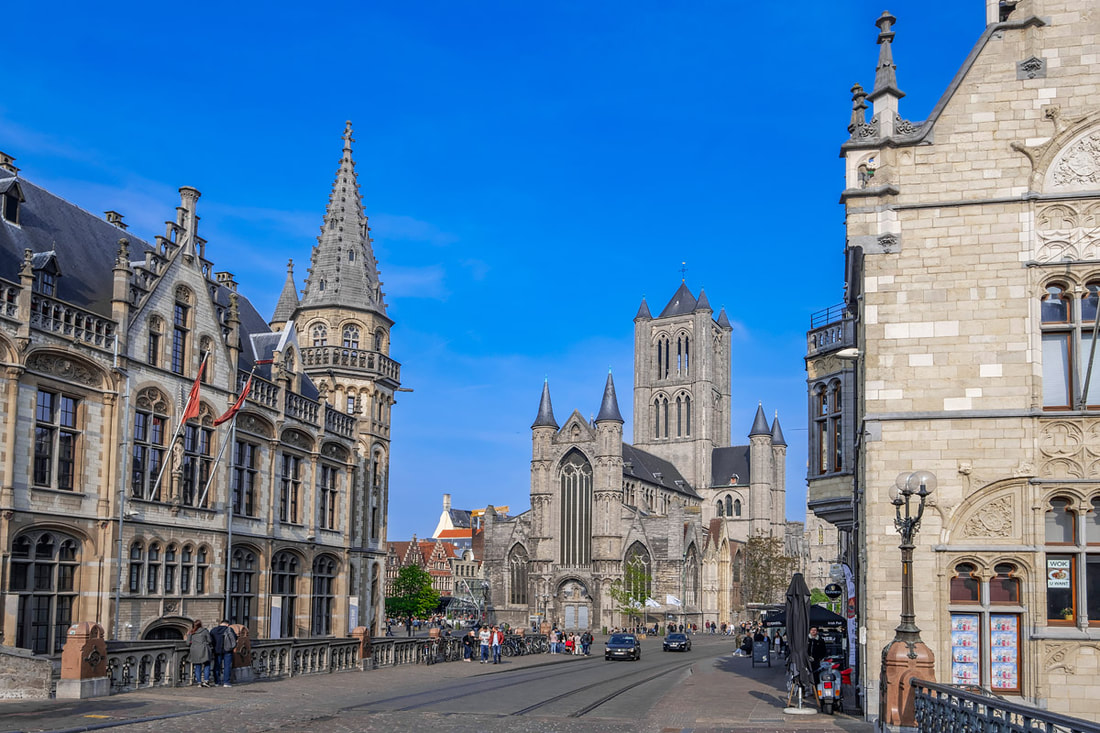By Antonio MalaraGhent was the third Belgian city that I visited together with my travel partner in May 2019. On that trip I was based in Brussels but the city was so small that we visited it in a short time and after two days we started to explore new places. In reality I didn't know Ghent and I hadn't put it on my list of things to see but thanks to a suggestion we had at the train station, we were lucky enough to be able to visit it. In fact, the visit to Ghent was a stop on the way back from our visit to Bruges, a stop recommended by the ticket agent from whom we bought the ticket. This visit was a total surprise and not having planned anything, on the train returning from Bruges, I limited myself to looking on Google Maps which was the road that led from the station to the centre. We arrived in Ghent at almost 5 PM, immediately outside the "Sin Pieters" station I noticed the beautiful design of the station all in red brick, with a beautiful circular tower where at the top there was the clock which instead was placed on a square structure. Unfortunately the horrible semi-circular external covering built of steel and glass was totally out of context and did nothing but obstruct the beauty of the station. The journey to the center was not short, however we passed through a beautiful town, with elegant, well-kept buildings and lots of greenery among trees and small parks. To my surprise and as if by magic, while walking we also crossed some canals, the existence of which I was unaware of. Paradoxically, after a few steps, in Ghent I had seen the canals, which in Bruges had been more complex. Above all, I was struck by a canal where an entire side was also used as a marina while the opposite side had buildings that reached down to the water in Venice style. That was the first positive surprise of a place that was totally foreign to me. The road took us straight to one side of the Church of St. Nicholas, to an intersection from where there was actually a very suggestive view towards many directions. In fact, on the left in front of the church there was a very beautiful building with a circular tower placed at the corner. Further from the palace there was another clock tower which was part of another structure whose view was obstructed. Beyond the originality of the Church of St. Nicholas which had an almost identical design to the Church of Our Lady of Bruges, therefore with several circular towers which then formed another larger structure, the real spectacle was to the right of the road . Looking towards that direction, in fact, there were two imposing towers that stood out in the distance; one was the Belfort and the other the tower of the Cathedral. To be honest, I didn't know the majesty of these structures, very beautiful as well as imposing. The Belfort up close was impressive with a square plan and the upper part formed by four octagonal turrets and in the center the spire with its tip soaring towards the sky. The facades built with brick blocks had very deteriorated parts and were probably originally completely smooth. The design of the four facades featured arched windows but with a very narrow style. On the right side of the tower stood the Cathedral, where the tower had a similar design to the Belfort but a smaller plan. That corner of Ghent was incredible for the structures present, in a small space there were two very high towers plus another church of considerable size. Nearby, the only negative note was represented by a modern structure with four reinforced concrete bases that supported the upper wooden part which was in turn covered by a glass structure. Luckily, nearby there was the City Hall which, with its mixed style, brought the aesthetic tone to a higher level. The City Hall had three facades with different styles; one side was identical to that of the Corporation Houses of Brussels but without the complex decorations, another facade had a black Doric colonnade distributed on three levels. The last side had a Gothic façade, totally different, full of decorations and statues, a bit like the Brussels City Hall but smaller. The latter was probably the original facade and the others had been rebuilt later or were part of an expansion of the original building, this at least was my impression. After leaving the City Hall area we headed towards the St. Michael Bridge and the river bank; that area was considered the central and lively part of the city. I must say that upon arrival the place was much more varied than I expected and not only from an aesthetic point of view. The two banks of the river were full of people, restaurants and other activities that I didn't know about. One of these were sailing rafts that were used as floating bars. In fact, people were sitting on these small boats enjoying a cocktail and chatting while sailing on the river. At the same time I noticed how any usable corner not only of the street but also of the river bank had the function of a bar; people were able to carve out a little space and make it their own, they were able to create a sort of privacy in public. I had never seen anything like it and I must say that I liked it straight away. Added to this were the real bars with tables and chairs so that part of Ghent had a harmony and a mixed appearance between classic elegance and bohemian style which was incredibly singular. Even after arriving at the next bridge, the one called Grasburg, the trend was always the same, bars built close to the river and quiet people relaxing enjoying that view made special by that personal style created in that part of Ghent. In all this also the architecture created a unique context with some very old buildings that made a very beautiful setting, some of them had inclined facades, like Amsterdam and I wondered how those facades could stand up. The opposite side to the one we arrived at, called Korenlei, was even more beautiful due to the view it overlooked. in fact the buildings in front were simply perfect in their diversity but contained in the same style. Moreover, when we were there, the climatic conditions had created a situation of good reflection in the waters of the river which made the spectacle even more evocative. That side was definitely more beautiful and crossing the St. Michael Bridge from that side, we had the last great view of the St. Nicholas Church which from the bridge showed not only the main facade perfectly, but it was possible to see all its towers and smaller and part of the Belfort on the right side. We left Ghent immediately afterwards but not because there was nothing else to see but because we were forced; the station wasn't close and we had to take a train whose departure time we didn't even know. Clearly Ghent wasn't just what we saw so it's not really a city to be explored in a couple of hours. Our visit was a suggestion taken with confidence and which led us to fleetingly admire a place that undoubtedly deserved more. However, as I see it, it is always better to see a place quickly rather than having had the chance to see it and given up. My feelings about Ghent were super positive and unique considering the fact that I visited and appreciated a city that that same morning I didn't even know existed. For me Ghent was the city of circumstance and chance; destiny took over my will with positive purposes. Ghent was like receiving an unexpected gift and even today, more than the things I saw and photographed in the city, what remains in my mind is the circumstance that brought me there. Pictures: Antonio Malara
Camera: Fujifilm XT3
0 Comments
Leave a Reply. |
